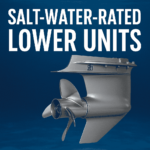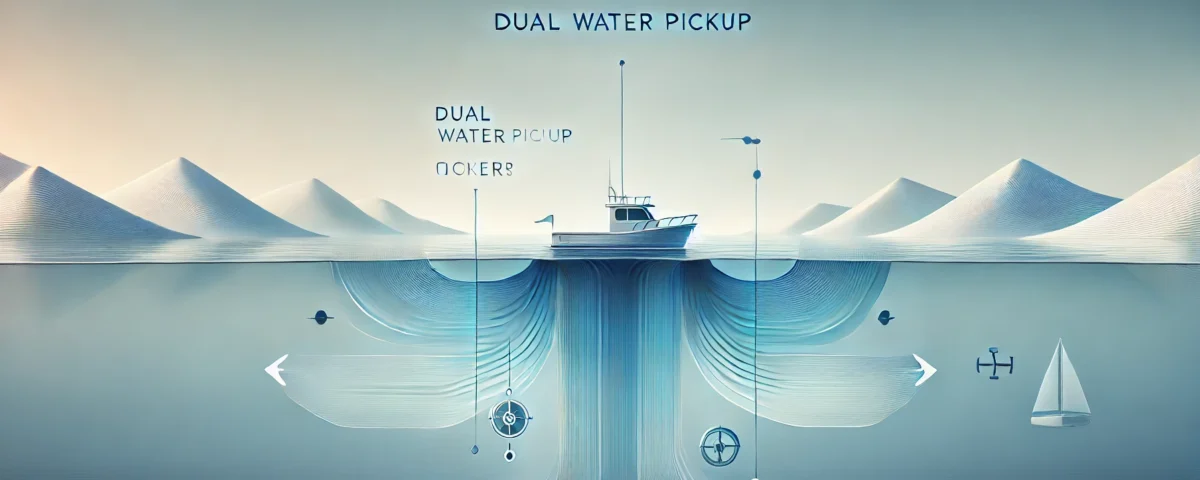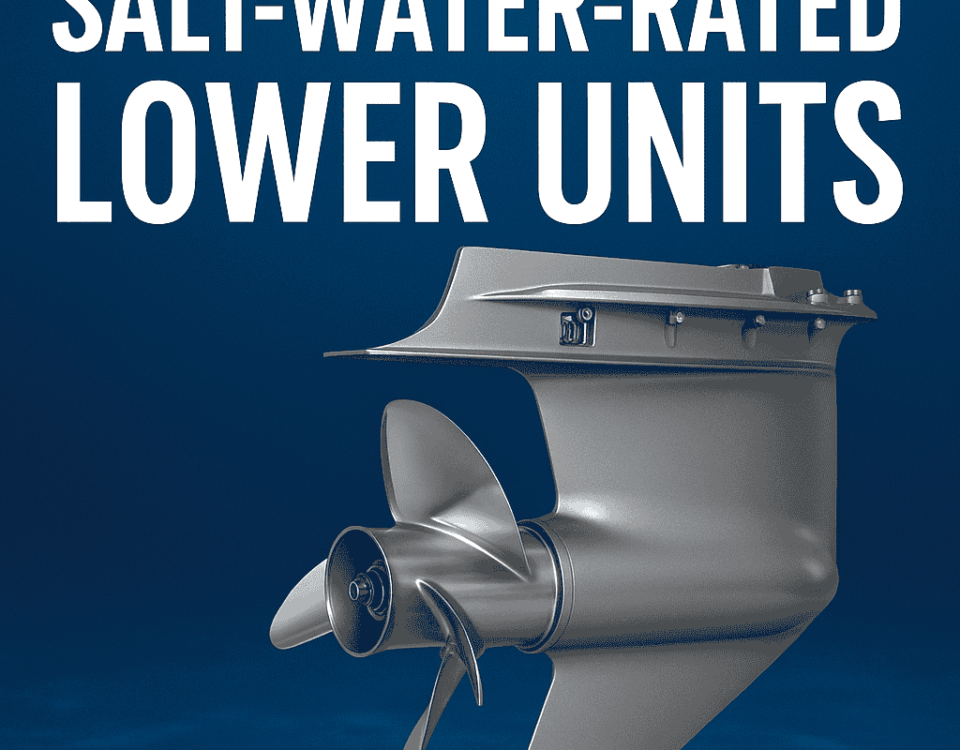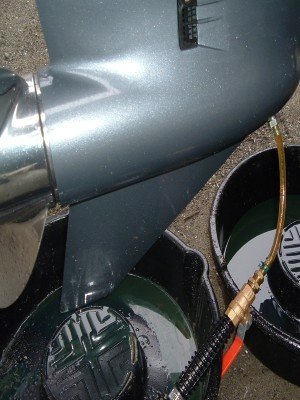
Understanding Yamaha F150TXR and LF150TXR Lower Units: A Complete Guide to Standard vs. Counter Rotation
March 14, 2025
Salt-Water-Rated Lower Units: The Complete Buyer’s & Care Guide (for Coastal, Brackish, and Offshore Boaters)
August 18, 2025Everything You Need to Know About Dual Water Pickups, Counter‑Rotation vs Standard Rotation, and Carrier‑Bearing Coolers
A friendly, expert guide for marine parts enthusiasts and Yamaha owners
Dual Water Pickup: Why More Cooling Matters
Many Yamaha V6 lower units, like those on LF250XB engines, use a dual water‑pickup design. This means two inlet ports on the skeg rather than one, offering:
- Greater cooling flow at high speeds or when running on plane
- Redundancy: if one picks up debris or air, the other often still supplies water
- Better performance under heavy load or aggressive handling—reducing the chance of overheating
Boaters on offshore trips or towing sporting gear will particularly notice improved reliability and temperature stability with dual pickups.
Counter‑Rotation vs Standard Rotation: Splitting the Torque
Standard Rotation (Right‑Hand)
- Prop spins clockwise when viewed from behind the boat.
- Typically the default on single‑engine boats.
- Easier to handle torque steering and trim effects on solo setups.
Counter Rotation (Left‑Hand Turn)
- Prop spins anti‑clockwise.
- Used in twin engine installations to neutralize prop torque, improve handling and maintain straight tracking at high speed.
- With Yamaha, the LF‑prefix (e.g. LF250XB) denotes a counter‑rotation engine.
You can convert standard to counter simply by swapping the lower unit—the upper engine remains unchanged.
Carrier‑Bearing Cooler: Keeping Bearings Cool Under Pressure
The carrier bearing is a key internal part in the gearcase that supports the prop shaft. On high‑horsepower engines like Yamaha’s 250 hp V6, it’s possible to generate considerable heat during prolonged high RPM use.
A carrier‑bearing cooler:
- Routes water around this bearing, drawing heat away.
- Extends lifespan of both the bearing and the surrounding gearcase.
- Commonly found as standard equipment on Yamaha counter‑rotation lower units like those for LF250XB.
Without this feature, heat buildup can accelerate wear, shorten service life, and even lead to bearing failure.
How These Features Work Together
Let’s see how it fits on a Yamaha LF250XB lower unit:
| Feature | Why It Matters |
|---|---|
| Dual Water Pickup | Ensures continuous cooling even at high speed or if one inlet is blocked |
| Counter Rotation | Delivers balanced thrust in twin engine installs, improving handling |
| Carrier Bearing Cooler | Prevents internal heat stress in demanding marine conditions |
For example, the SEI 90‑429 series lower unit lists exactly these features for the LF250XB application: dual water pick‑ups, carrier‑bearing cooler, and counter‑rotation, with 25″ shaft and correct gear ratio options.
In Real‑World Use: What Boaters Say
Forum users and marine technicians confirm:
“It is quite practical and feasible to convert a standard rotation unit to a counter rotating unit … only by changing the lower unit.”
“Counter rotation drives have additional bearings … to handle reverse rotation.” That extra design detail is part of what makes units like LF250XB robust for twin engine boating.
Final Thoughts
If you run a Yamaha LF250XB (2018) or similar V6 outboard:
- Insisting on a dual water pickup lower unit ensures confidence in your cooling under tough use.
- A counter‑rotation model is mandatory when part of a twin installation.
- A carrier bearing cooler is not a luxury—it’s essential to protect critical moving parts.
When shopping, make sure your potential lower unit explicitly lists all three features: dual pickup, counter rotation, and bearing cooler. That ensures you get reliability, performance, and durability.
Take Action
When checking parts listings or aftermarket vendors:
- Confirm shaft length (25″ vs 30″)
- Confirm gear ratio (e.g. 1.75:1 or 1.85:1)
- Confirm rotation and cooling specs
This knowledge will help you avoid costly mistakes—and keep your engine running strong for years to come.




